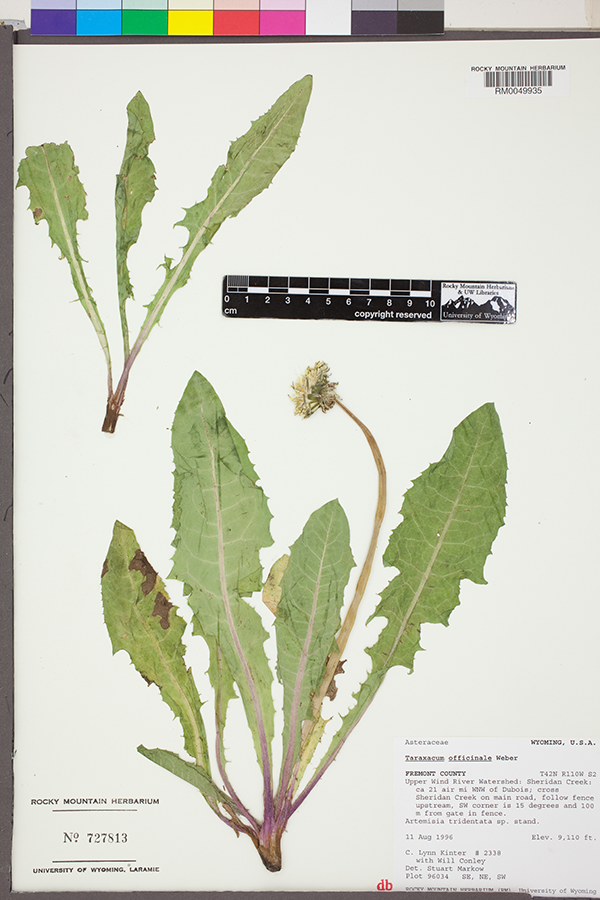Dandelions
Exploring a common plant at home and with the Rocky Mountain Herbarium.

Most of us know dandelions as a “weed,” but why do we call it a weed?
Weed can mean many different things to different people. Which of these definitions do you use?
- A plant that’s not good for anything.
- A plant that grows everywhere.
- A plant that nobody planted.
- An ugly plant.
- A plant that shouldn’t be here.
- A plant growing where it’s not wanted.
Many people say that a weed is a plant that spreads around, and that shouldn’t be here, as in, it came from somewhere else. By that definition, the common dandelion is certainly a weed. It is native to Europe and Asia, and arrived in North America with the first European immigrants, perhaps as a food and medicinal plant, or perhaps the introduction was unintentional. Since then, it has spread across the continent, occupying suitable habitat in every state and province, and is also present in Mexico. It is considered a pest in lawns and agricultural settings.
But it has its attractions, too. It blooms for much of the year, often managing to flower even in winter if the microclimate is good, for example, on the south side of a building. It frequently presents the first flowers of the spring, making it a valuable resource for early pollinators and other insects, and the leaves are eaten by the caterpillars of a number of moth and butterfly species. Dandelion leaves have been and are eaten by people, too, as a salad green or pot herb, usually the first to be had in spring. Dandelion leaves are high in vitamins A, B, C, and D, as well as minerals, such as iron, potassium, and zinc. The roasted roots can be used as a (caffeine-free) coffee substitute. And dandelion flowers can be eaten as well, or made into wine (if you have other ingredients and lots of time).
Download the full lesson plan:
30 MB - download is in .zip format and includes lesson plan PDF's, and two sets of specimen images from the Rocky Mountain Herbarium.


